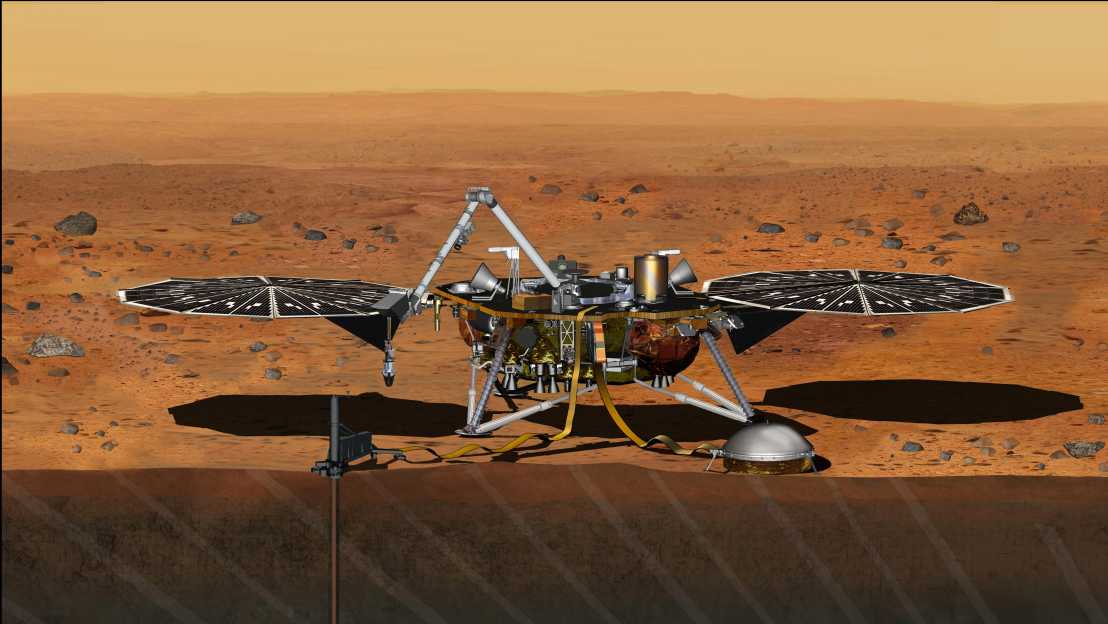Planetary science
Composition, origin, and evolution of the terrestrial planets
Knowledge of the internal constitution of the planets is crucial to our understanding of the origin and evolution of our solar system. Major constraints can be placed on planetary accretion, differentiation, and mantle evolution from knowledge of bulk chemical composition.
The terrestrial planets are believed to have been derived from material from a broad region of the inner solar system. Planet accretion models have also shown that each planet generally accretes a higher proportion of more localised material and thus retains some form of compositional memory. This is supported by evidence from elemental and isotopic differences among the terrestrial planets. While it is generally assumed that the Earth is derived from chondritic material, it has proved difficult to assemble the Earth from any known chondrite or even combinations thereof given the diversity in chemical compositions spanned by these.
The composition of peridotites, which are samples from the upper mantle, are found to be depleted in Si relative to the chondrites. Chondrites are traditionally considered the building blocks of the terrestrial planets, as these appear to sample the primitive material that started out as dust in the solar nebula and which, through collisional processes, grew into planets. A possible solution to the conundrum of Si depletion is to propose that it has been sequestered into the core and/or lower mantle. The resolution of the lower mantle Si content, or the bulk mantle composition in general, therefore holds the potential of providing insight into the nature of the material from which the Earth assembled.
Using various types of geophysical data (e.g. seismic, electromagnetic sounding, and geodetic data), in combination with data emanating from petrology experiments, geo- and cosmochemical analyses, and insights obtained from geodynamic modeling studies, we seek to derive constraints on the average composition of the Earth and the terrestrial planets with the ultimate purpose of shedding light on their cosmochemical origin.
InSight - A unique science opportunity

For Mars, an increasing amount of observations, both in situ and from laboratory analyses of Martian meteorites, in addition to models that bear on interior structure and evolution have become available that have allowed us to refine our understanding of planetary processes from a Martian vantage point; yet much remains to be understood.
This situation is destined to change with the upcoming Discovery-class InSight (Interior Exploration using Seismic Investigations, Geodesy and Heat Transport) mission selected by NASA to land a seismometer on the surface of Mars in September 2016. The mission is a joint JPL-European undertaking where the payload (e.g., seismometer, heat flow probe, electronics, and leveling system) onboard InSight are delivered by France, UK, Switzerland, and Germany, among others. Nominal operation time is a minimum of 2 Earth years, but is likely to last longer.
The goals of the mission are to provide insight on formation and evolution of terrestrial planets by investigating the interior structure and processes of Mars. It will determine thickness, structure and composition of crust, mantle and core, determine the thermal state of the interior, and measure the rate and distribution of internal seismic activity and the rate of meteorite impacts. To achieve this, InSight will make use of advanced single-seismometer analysis techniques that are currently applied on Earth, along with extremely precise measurements of variations in the spin axis of the planet, and the subsurface thermal gradient, to provide the first direct measurements of the internal structure of Mars.
Mars represents a near-ideal laboratory, because Mars is large enough, in terms of interior pressure and temperature, to have shared most of the early processes that shaped all terrestrial planets, but small enough to have retained the fingerprints of those processes for more than four billion years. While InSight will land on Mars, its scientific implications reach across and beyond our Solar System, providing knowledge about the fundamental processes of terrestrial-planet formation and evolution, of critical importance for ongoing discoveries of extra-solar planets and our ability to characterize their interior structures.

